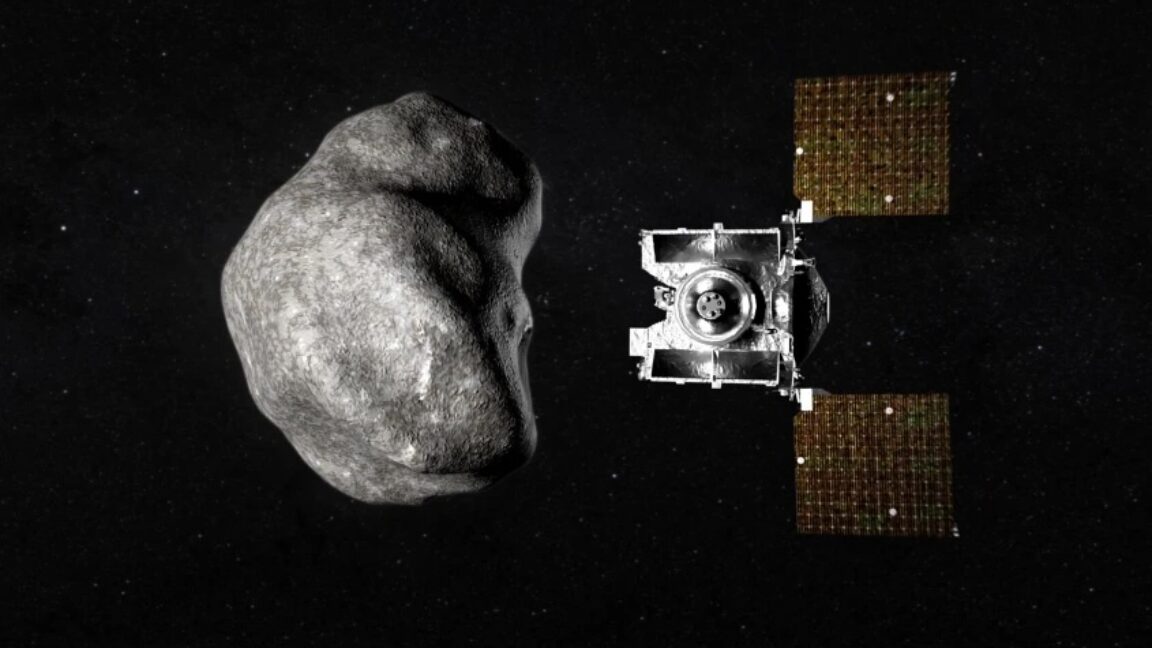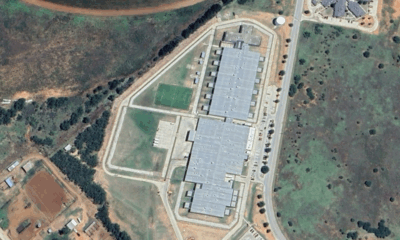Science
NASA Rescues OSIRIS-APEX Mission as Budget Cuts Loom

NASA has reinstated the OSIRIS-APEX mission, which aims to study the asteroid Apophis during its close flyby of Earth in April 2029. This decision comes after the Trump administration’s earlier proposal to cut funding for 19 science missions, which would have included OSIRIS-APEX. The reversal offers renewed hope for scientists involved in this project, as well as for others facing potential termination.
Principal investigator Dani DellaGiustina from the University of Arizona expressed relief after the mission received a budget allocation of $20 million in the House appropriations bill. “We were called for cancellation as part of the president’s budget request, and we were reinstated and given a plan to move ahead in FY26 just two weeks ago,” DellaGiustina said. She confirmed that the spacecraft is in excellent condition, ready to conduct its mission.
The OSIRIS-APEX mission repurposes technology from NASA’s previous OSIRIS-REx mission, which successfully returned samples from the asteroid Bennu in 2023. The spacecraft will now focus on Apophis, which is approximately 1,100 feet (340 meters) in diameter and will pass 20,000 miles (32,000 kilometers) from Earth. This close encounter presents a unique opportunity for scientists to gather data on a potentially hazardous asteroid.
Despite this positive development, uncertainty looms over the future of other NASA missions. The Trump administration proposed nearly a 50 percent cut to NASA’s science budget for Fiscal Year 2026, which began on October 1. The Senate has proposed maintaining funding for the agency’s science division at $7.3 billion, the same as in Fiscal Year 2025. In contrast, the House bill suggests a reduction to $6 billion, still significantly higher than the $3.9 billion proposed by the White House.
While OSIRIS-APEX has secured its funding, many of the other missions that faced cancellation remain in jeopardy. Earlier this year, NASA directed managers from the threatened missions to prepare for potential shutdowns. A scientist involved in one of these missions revealed that NASA recently requested a more detailed termination plan, which includes the “passivation” of spacecraft. This process involves venting remaining fuel and draining batteries, effectively rendering the missions irrecoverable.
The uncertainty surrounding the budget has already impacted the scientific community. DellaGiustina noted that her mission’s science team is effectively on hold until 2027, which hampers training opportunities for younger scientists. She stated, “We are definitely undermining our readiness,” particularly in light of the need for instrument recalibration after the spacecraft’s sample collection mission.
Funding cuts have not only stalled missions but also led to a loss of expertise. Engineers at Lockheed Martin, which built and operates OSIRIS-APEX, have been reassigned to other projects, diminishing the support for NASA’s planetary science initiatives. Other active missions awaiting budget confirmation include the Chandra X-ray Observatory, the New Horizons probe, and the MAVEN spacecraft studying Mars’ atmosphere.
The future of these missions remains uncertain. A senior official from one of the projects stated they have received “no direction at all” beyond continuing operations until further notice. The THEMIS mission, which maps the lunar magnetic field, will receive partial funding for Fiscal Year 2026, but its lead scientist, Vassilis Angelopoulos, highlighted the challenges posed by defunding, stating, “The effect is the US is not achieving the scientific return it can from its multi-billion dollar investments.”
The Planetary Society, a science advocacy group, estimates that the missions slated for cancellation represent a cumulative investment of $12 billion. These missions cost taxpayers less than $300 million per year, or between 1 and 2 percent of NASA’s annual budget.
Scientists and advocates for NASA’s science program gathered at the US Capitol this week to rally support against the proposed cuts. Angelopoulos remarked on the positive impact of public advocacy, stating, “I take the implementation of the House budget as an indication that the constituents’ pressure is having an effect.”
Despite the reinstatement of OSIRIS-APEX, concerns persist about the administration’s willingness to allocate funding appropriately. Bruce Jakosky, former principal investigator of the MAVEN mission, articulated the ongoing uncertainty: “Having a budget isn’t the end; and having the money get distributed to the MAVEN science and ops team isn’t the end—only when the money is actually spent can we be assured that it won’t be clawed back.”
The fate of numerous NASA missions remains precarious, with scientists and stakeholders advocating for stable funding to ensure the continuation of critical research and exploration.
-

 World3 months ago
World3 months agoScientists Unearth Ancient Antarctic Ice to Unlock Climate Secrets
-

 Entertainment3 months ago
Entertainment3 months agoTrump and McCormick to Announce $70 Billion Energy Investments
-

 Science3 months ago
Science3 months agoFour Astronauts Return to Earth After International Space Station Mission
-

 Lifestyle3 months ago
Lifestyle3 months agoTransLink Launches Food Truck Program to Boost Revenue in Vancouver
-

 Technology2 months ago
Technology2 months agoApple Notes Enhances Functionality with Markdown Support in macOS 26
-

 Top Stories7 days ago
Top Stories7 days agoUrgent Update: Fatal Crash on Highway 99 Claims Life of Pitt Meadows Man
-

 Sports3 months ago
Sports3 months agoSearch Underway for Missing Hunter Amid Hokkaido Bear Emergency
-

 Politics2 months ago
Politics2 months agoUkrainian Tennis Star Elina Svitolina Faces Death Threats Online
-

 Technology3 months ago
Technology3 months agoFrosthaven Launches Early Access on July 31, 2025
-

 Politics3 months ago
Politics3 months agoCarney Engages First Nations Leaders at Development Law Summit
-

 Entertainment3 months ago
Entertainment3 months agoCalgary Theatre Troupe Revives Magic at Winnipeg Fringe Festival
-

 Politics1 week ago
Politics1 week agoShutdown Reflects Democratic Struggles Amid Economic Concerns





















